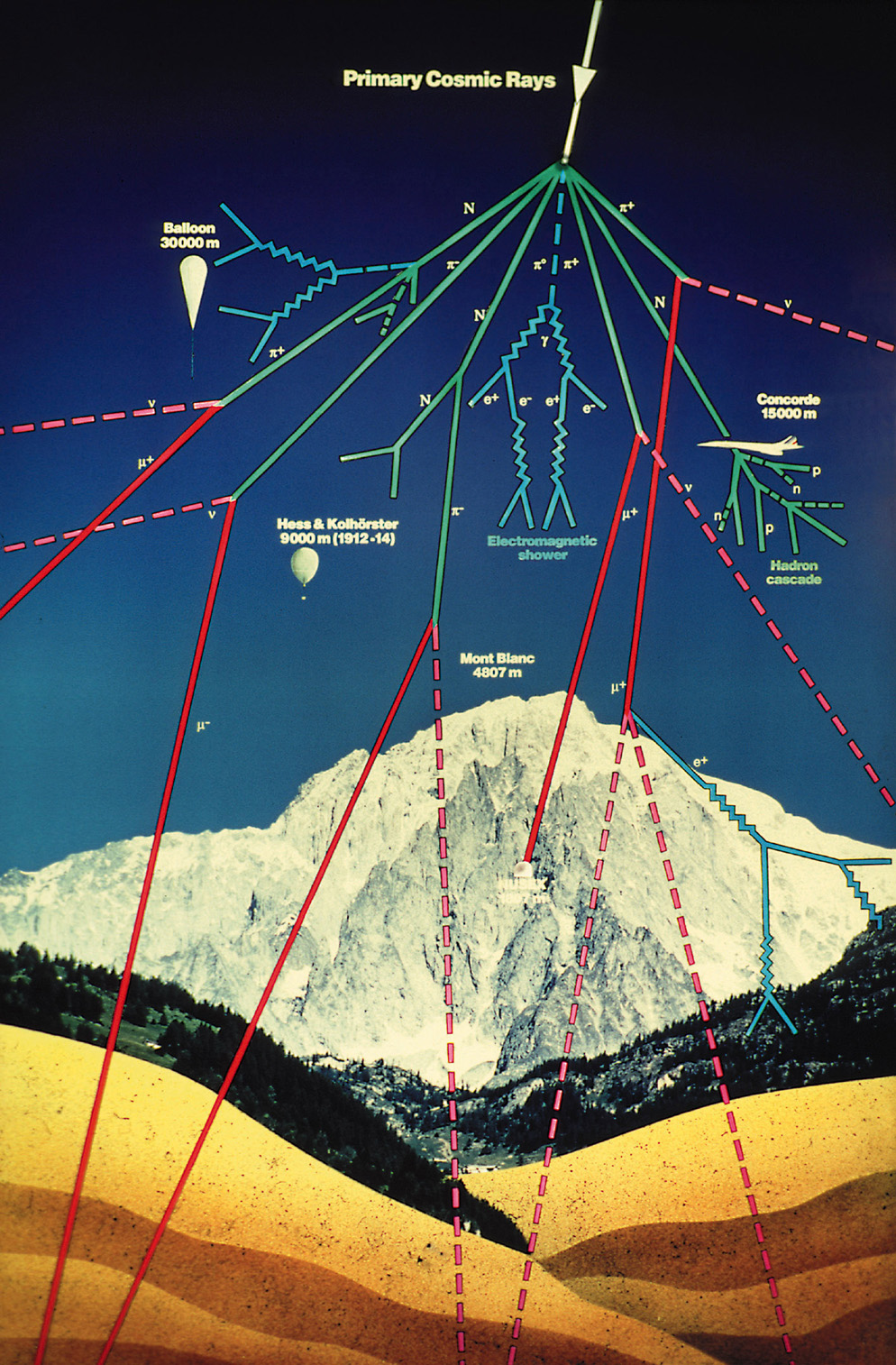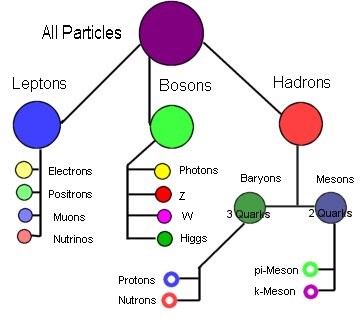What are Pions? An Overview
Hello everyone,
Here's another subatomic particle overview post. This post is going to an overview of one of the more common mesons, the Pion. Pions are the unseen source of a good amount of the background radiation we see on Earth.
Pions and Mesons

A positively charged pion
Image credit
Pions are subatomic unstable particles and are a type of meson. Notably, they are the lightest hadron (particles made up of quarks) and the lightest free particle (I'm not counting gluons and quarks because these are confined) that can undergo strong force interactions. But what are mesons?
Ordinary atomic nuclei are made up of protons and neutrons, which are in turn made up of three quarks each. Protons consist of two up quarks and a down quark, while neutrons consist of two down quarks and an up quark. Other far more unstable hadrons with three quarks (called baryons) also exist, but decay extremely quickly.
However, 2-quark systems also exist - in particular, bound states of quarks and antiquarks. These are called mesons, and like baryons, they interact via the weak, strong, and gravitational forces (and electromagnetism, if they are charged). However, represented by a concept called conservation of baryon number, baryons cannot decay past the proton, while mesons can decay away into lighter and lighter particles (leptons, photons) and lose their "meson status".
Now onto pions specifically: Pions are bound states of up and down quarks and antiquarks. There are three types of pions: Negative and positive pions (charged pions) and neutral pions. Neutral pions can decay via the electromagnetic force into two photons (effectively a like quark-antiquark annihilation), so they decay very quickly (on the order of 10^-17 seconds). Charged pions, on the other hand, only decay via the weak force, and as such last much longer: On the order of nanoseconds, which is quite long as far as meson lifetimes are concerned.
Pions are notable in that they are a decent contributor to the background radiation we can detect here on the ground. However, this isn't because of pions directly hitting geiger counters. Let's look at the decay modes for pions to see why:
Pion Decays
As I mentioned before, there is no conservation of "meson number", so mesons are free to essentially decay out of their meson status. Heavy unstable baryons cannot do this - eventually they will decay to the proton, which has never been observed to decay. Protons are the lightest baryon and are stable, but pions are the lightest meson and are unstable.
Neutral mesons typically decays into two very high energy photons. Even though neutral mesons have a lower mass than charged mesons, they decay much faster because they decay electromagnetically.
Charged pions on the other hand decay via the weak interaction. Because of this, charged pions live much, much longer than neutral pions - on the order of 10^8 times longer. The charged pions tend to decay into leptons - in particular, the positive pion usually decays into a positive muon and a muon neutrino, while the negative pion tends to decay into a negative muon and a muon antineutrino. The pion's mass, being about 7x less than the mass of a proton, is high enough to allow the production of these muons during a decay.

Most common decay mode for a negative pion
Image credit
Muons, if you recall, are a type of lepton that are essentially very heavy unstable electrons that decay into high kinetic energy electrons and neutrinos on the order of 10^-6 seconds.
Pions on the ground
Many pions are produced every second dozens of kilometers above our heads as high energy cosmic rays (mostly extraordinarily fast moving protons) smash into the atmosphere, producing a zoo of different particles. With a lifetime of around 10^-8 seconds, only extremely relativistic pions would ever reach the surface before decaying.
However, when these pions do decay, they usually decay into muons, which live about 100x longer than pions on average, and do often reach the surface. In fact, these muons make up some of the background radiation on Earth, which can be detected on hobbyist detectors. Of course some muons are produced by direct cosmic ray collisions but most of them will come from these pion decays.
These naturally occurring muons raining down from above are actually not without their uses. The muons that do reach the ground have quite high kinetic energies, and as such can go quite far into materials before being stopped. This coupled with the fact that the rate at which muons hit the surface is somewhat constant about the entire surface means that muons can be used to image things. Muon imaging has been used to explore the insides of things like shipping containers, nuclear reactors, and ... pyramids. Yes, these natural muons have been used to see inside of a pyramid at Giza.
I find it fascinating that we can detect and use a certain type of unique radiation that was actually produced by another, completely different unseen particle high above our heads.
If you're interested in learning more, here's some sources to find out more about pions and their decays:
Hyperphysics
Wikipedia
Slightly off topic paper on pion decay in magnetic fields
Thanks for reading!

Nice post. I however have a couple of comments, if you allow me to do so.
This is only partially true, in a kind of naive way. For instance, accelerated protons like at the LHC, at CERN, are much more complicated than this. They have an important gluon content, for instance.
Gravity can be ignored here. Pion masses are way too small to yield anything substantial.
I didn't realize this - Thanks for your corrections!
I feel I need more diagrams just to break donw what makes up what!... Like this one!
I find this diagram confusing as it mixes elementary particles and composite states. Those are not the same beasts, and they are not embedded within the same physics description (different energy scales are in order).
For instance, the photon, Z and W bosons have a very different nature from the Higgs boson, although all these guys are elementary, whilst mesons are (not elementary, or composite) bosons. In addition, you are missing many many many other composite states (and some elementary particles too).